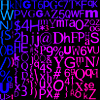Multiple Animations
Hello.
In many 3D modelling and animation books I've referenced, the book will talk about using the timeline, weighting the vertices to the bones, moving, keyframes, etc.
But even when the book (or online tutorial) is aimed at 3D for games, the author skates over the topic of multiple animations for the same mesh. Although I can make a character walk, I don't see exactly how the mechanism works for including multiple animations, such as shoot, walk, run, crouch, etc. work with the one mesh.
Can anyone help me understand this? Most conveniently, from a 3DS MAX point of view.
Cheers,
Mitch.
Well, animations are cyclical right? You make your animations such that the end of a cycle of one motion, like walking, blends smoothly into the beginning of the cycle of the next motion, such as running. The game's programming and input from the player signals when to switch to a different cycle (or hold still). Sorry I can't explain better than that, I'm a 2D animator so I'm kinda vague on the details of making it work in 3D, hopefully someone else can explain more.
I want to help design a "sandpark" MMO. Optional interactive story with quests and deeply characterized NPCs, plus sandbox elements like player-craftable housing and lots of other crafting. If you are starting a design of this type, please PM me. I also love pet-breeding games.
Very often for more responsiveness, you don't want to wait for the current animation sequence to reach to a preset point where you could safely step transition to another animation sequence, but instead you immediately do a linearly weighted blend from one of the animations to another. That is, to transition from a walk to a run you evaluate both the walk and run animations and compute something like t*Run + (1-t)*Walk, where t goes from 0.0 to 1.0 within, say, 200-500ms.
For a lot of animation sequences, this looks well enough. Any unnatural poses that might occur are quite hard to see since it's only for such a small time period. If you just stepped from one animation sequence to another, the popping that occurs is far more visually detectable.
This kind of method is also very easy for the artists since they can produce all the animation sequences independently without having to pay extra attention to making them work together. Of course, it does have its limitations. For example producing exact foot stepping (so that the forward motion speed matches the foot steps in the animation) can be challenging. Also doing this for complicated transitions (run -> stop and reach to own backpack for another weapon) might not look the most plausible, but it's still a good and flexible tradeoff.
For a lot of animation sequences, this looks well enough. Any unnatural poses that might occur are quite hard to see since it's only for such a small time period. If you just stepped from one animation sequence to another, the popping that occurs is far more visually detectable.
This kind of method is also very easy for the artists since they can produce all the animation sequences independently without having to pay extra attention to making them work together. Of course, it does have its limitations. For example producing exact foot stepping (so that the forward motion speed matches the foot steps in the animation) can be challenging. Also doing this for complicated transitions (run -> stop and reach to own backpack for another weapon) might not look the most plausible, but it's still a good and flexible tradeoff.
This topic is closed to new replies.
Advertisement
Popular Topics
Advertisement
Recommended Tutorials
Advertisement





